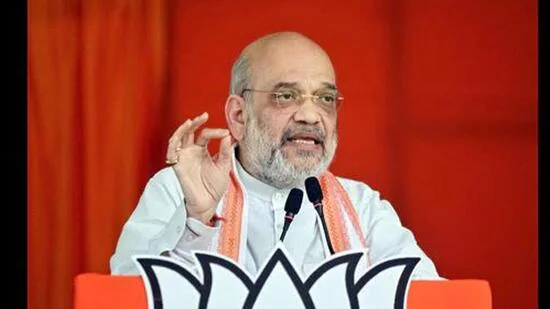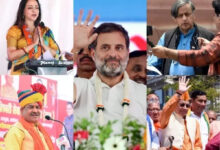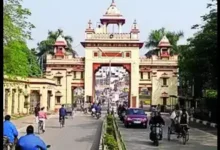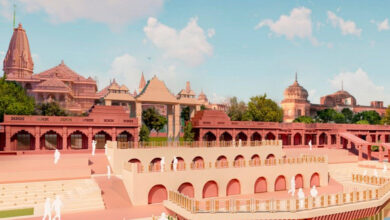How important it is that the BJP wins all eight seats in Uttar Pradesh’s first phase
Lucknow: Recently, Union Home Minister Amit Shah showed confidence in his ability to surpass the Bharatiya Janata Party’s (BJP) record of 71 Lok Sabha seats in Uttar Pradesh (73 with allies) set in 2014.

Like in 2014, the BJP needs to win every seat in the first phase of the seven-part elections if it is to surpass the total number of seats won in Uttar Pradesh that year.
Riding high on “Ram Dhun,” the party is placing a lot of emphasis on wins in Uttar Pradesh to make up for potential electoral losses elsewhere in the nation, with the ultimate goal of achieving an 80/80 strike rate.
On Wednesday, the first round of nominations got off without any declared candidates for a few crucial seats, including Pilibhit. Muzaffarnagar, Pilibhit, Rampur, Bijnor, Nagina, Moradabad, Saharanpur, and Kairana will all have voting on April 19.
Typically, candidates get frustrated when their names are announced too late since they have just around two weeks to reach out to thousands of voters in seats that are geographically vast in Uttar Pradesh.
That’s why it’s so important to win the seats in the first round.
In the 2014 elections, the BJP won all eight seats. However, in 2019, the Samajwadi Party, Bhujan Samaj Party, and Rastriya Lok Dal coalition won five of these seats, reducing the BJP’s total victory count to nine seats. In 2014, the BJP and its allies had won 64 seats in the state.
Though hailed as a game changer at the time, the SP-BSP-RLD coalition was unable to halt the BJP, merely lowering the party’s vote total in comparison to 2014.
The party lost the Lok Sabha seats of Rampur, Moradabad, Saharanpur, Bijnor, and Nagina in 2019. However, in the June 2022 by-election, Rampur was won by the party.
This explains the desperate attempt by the BJP high leadership to include the Rashtriya Lok Dal in the NDA despite the party’s minimal influence in a few western Uttar Pradesh seats. The father of RLD chairman Jayant Chaudhury and the party’s founding president, Chaudhary Ajit Singh, had previously suffered a defeat to the BJP in Muzaffarnagar, a BJP stronghold. Then, despite their resentment of the BJP administration at the Center, the Jats abstained from voting for the SP-BSP-RLD coalition. The Jat community is said to have been heavily swayed by the communal disturbances in Muzaffarnagar in 2013 to support BJP candidate Sanjeev Baliyan in the election.
Today, the party is confident that it will reclaim the five seats thanks to a course correction that includes forging social coalitions.
The farmers are still protesting, and while some have expressed disapproval of the RLD’s decision to switch to the BJP, Muzaffarnagar farmer Jagat Singh believes that the current “kisan aandolan” would not have a significant effect on the election results. Singh said that the BJP will benefit from the RLD’s readmission to the NDA and that the Jats are pleased that their leader Charan Singh received the Bharat Ratna posthumously.
Prominent Jat leader Anil Chaudhary, who was once affiliated with the Lok Dal but is now a member of the Congress, refutes this. He claims that the promises made by the Congress to women, youth, and farmers will revolutionize the area, where attitudes toward one another have cooled.
Mayawati and BSP
Mayawati’s choice to run alone would also benefit the BJP since it will reduce the number of votes cast for the opposition coalition INDIA. There is a sizable Muslim community in each of the eight constituencies.
Thus, a lot of observers attribute Mayawati’s choice to run on her own instead of accepting the Congress’s open invitation to the BJP. In 2019, the region’s Dalit-Muslim votes were solidified by the SP-BSP coalition.
There are several well-known contenders with a lot on the line. For example, from 1989, the Pilibhit Lok Sabha seat has supported Maneka Gandhi-Varun Gandhi. In 1989 and 1996, Maneka emerged victorious as the Janata Dal nominee. She also ran as an Independent in 1998, 1999, and 2004 and again as a BJP candidate in 2014. 2009 and 2019 saw her son Varun Gandhi secure the seat. Although he hasn’t declared yet, the party’s future will depend on whether or not to field him.
A FEW TALKING POINTS
Muzaffarnagar: In 2019, RLD’s Singh was defeated by Union Minister Baliyan. Harendra Malik, a well-known Jat leader, has been put up by the Samajwadi Party. Amidst the farmer’s unrest, would the Jats come together in support of Baliyan?
Rampur: The leadership of the SP is at a loss on who to field because Azam Khan and his family are incarcerated. In the 2022 by-election, the BJP candidate was chosen by the constituency that had more than 60% Muslims. Will the party benefit from the pity factor?
Saharanpur: In the first round, the Congress will just run for this one seat. Will the party open its account with SP, its polling partner’s backing?
RLD: Jayant Chaudhary, who broke up his partnership with the Samajwadi Party and decided to run for two of the 80 seats, will have to overcome the difficulty of holding onto the social coalition he has been working to build over the years among Muslims, Dalits, and Jats. His well recognized quote, “Main koi chavanni nahin hoon jo palat jaaonga (I am not a 25 paisa coin which will flip),” is still remembered.
Bijnor: In 1989, Mayawati was victorious in her first Lok Sabha election from Bijnor. The party then prevailed in it in 2019. After her 2019 coalition broke apart, would she be able to hold the seat in a constituency with a sizable Muslim, Dalit, and Jat population?







